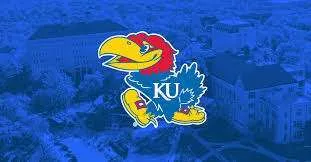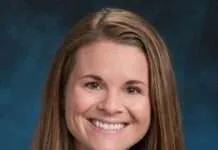Headlines
Oral history project chronicles how the pandemic changed community newspapers’ business model
LAWRENCE — A University of Kansas journalism professor has co-created an oral history of how newspapers in the middle of the country, including in Kansas, have demonstrated resilience during the COVID-19 pandemic, finding new methods of funding and developing new business models. The work, published in the journal Journalism Practice, is also available on Poynter’s website and archived.
Researchers develop hardware-cybersecurity education program with $400,000 NSF grant
LAWRENCE — As complex global supply chains are stressed by the COVID-19 pandemic, risks increase of corporate or state espionage via hardware, such as malicious “trojan” circuits hidden on a motherboard by a third-party vendor. Now, a new effort based at the University of Kansas School of Engineering aims to design course modules to train students in building and maintaining more secure computer hardware. The work is supported by a $400,000 grant from the National Science Foundation’s Secure and Trustworthy Cyberspace (SaTC) program. Of that, $163,000 will come to KU.
Kansas Fire & Rescue Training Institute partners with Kansas Rowing for customized water safety course
LAWRENCE — Kansas Fire & Rescue Training Institute (KFRTI) technical rescue program instructors recently trained coaches from Kansas Rowing, Kansas Crew and the University of Kansas diving team, as well as local lifeguards, on lifesaving rescue techniques for the Kansas River. The Aug. 17 course began in the Kansas Rowing Boathouse with an in-classroom introduction before the 15 participants hit the river to perform rescue exercises.
Full stories below.
————————————————————————
Contact: Mike Krings, KU News Service, 785-864-8860, [email protected], @MikeKrings
Oral history project chronicles how the pandemic changed community newspapers’ business model
LAWRENCE — In the early days of the COVID-19 pandemic, community newspapers faced a nonstop news cycle and new challenges in providing vital information to their readers. At the same time, the pandemic presented a financial crisis as advertising revenue declined. A University of Kansas researcher has co-created an oral history of how newspapers in the middle of the country demonstrated resilience in the crisis, finding new methods of funding and developing new business models.
While major news organizations around the world were continually supplying national and international numbers during the pandemic, a majority of U.S. residents turned to their community newspapers for local information. And while those businesses were struggling, news was also coming out about the toll exacted on the journalism industry by the pandemic. Community newspapers, who comprise 85 percent of all U.S. newspapers, were especially hit hard.
“We kept seeing headlines during the pandemic about how many newsrooms had closed or about how the pandemic was killing newspapers,” said Teri Finneman, associate professor of journalism at KU and lead author of the study. “That was the constant refrain, so we wanted to know more about the ones that survived. The majority of journalism in this country is done by small weeklies. Especially in the pandemic, when people needed hyperlocal information, it made understanding how the community paper operated even more important.”
Finneman and co-authors Will Mari of Louisiana State University and Ryan Thomas of the University of Missouri conducted research for an oral history of newspaper publishers and journalists from North Dakota to Louisiana. About two dozen respondents from local and community-owned newspapers with circulations ranging from 500 to 17,000 shared their stories. A study on the business aspect, part of a three-article series, was published in the journal Journalism Practice. They also presented all of their findings on Poynter’s website and have archived all transcripts in each state’s official archives.
U.S. journalism has a long history of being averse to government funding. While the practice of government support of journalism separate from state-controlled media is common in other parts of the world, the oral history revealed government support played a key role.
“The resistance to government funding quickly disappeared in the face of a pandemic,” Finneman said. “It became very clear that the Paycheck Protection Program saved many newspapers. The journalists stated very plainly that their work was about public service, and whatever they had to do to stay open and providing information to their readers, they were going to do.”
Journalists in the history also revealed how they took on new roles to generate revenue, such as providing social media marketing services for other organizations, taking on printing service jobs or trying new marketing methods like going door to door to sell subscriptions. In addition to emergency government funding, many sought grants from sources such as Facebook and Google, a step that Finneman said was somewhat ironic given the massive damage those companies have done to local journalism, though at least a small way for them to give back. Others applied for community grants to stay afloat financially.
The oral history also revealed bureaucratic challenges some newspapers faced when attempting to navigate the pandemic. Journalists in Nebraska indicated how they wanted to switch to an online-only model, but state law requires officially licensed newspapers to produce a print copy 52 times a year. In Arkansas, publications had issues with state oversight of broadband internet service that provided challenges in making news widely available.
Finneman said she and co-authors decided to conduct an oral history because the situation was changing so rapidly, especially during the pandemic’s early days, that the risk of forgetting those challenges was acute. Above all, the history shows the urgent need for journalists, publishers and researchers all to work together to find solutions to the industry’s outdated business model.
If there were silver linings to the pandemic’s challenge to community journalism, among them was the illustration of the vital importance of local newspapers to provide information that residents outside of major cities cannot find elsewhere. To ensure those publications can survive, a deeper conversation on sustainable journalism, with the possibility of government support, as well as conversations on the definition of newspapers are necessary, Finneman said.
“I hope the pandemic was a wake-up call. We cannot afford to have more newspapers close and not be able to provide critical information to their communities,” Finneman said. “I would also hope we don’t fall into old habits and can work together to solve these problems. Newspapers need to have the flexibility and supports to do what they need to do in an emergency and not lose their status as a legal newspaper.”
-30-
————————————————————————
The official university Twitter account has changed to @UnivOfKansas.
Refollow @KUNews for KU News Service stories, discoveries and experts.
Tweets by KUnews
————————————————————————
Contact: Brendan Lynch, KU News Service, 785-864-8855, [email protected], @BrendanMLynch
Researchers develop hardware-cybersecurity education program with $400,000 NSF grant
LAWRENCE — Phishing attacks, malware, distributed denial-of-service (DDoS) attacks, zero-day exploits. Many commonly reported cyberattacks focus on computer software vulnerabilities. But what about computer hardware? As complex global supply chains are stressed by the pandemic, risks increase of corporate or state espionage via hardware, such as malicious “trojan” circuits hidden on a motherboard by a shady third-party vendor.
Now, a new effort based at the University of Kansas School of Engineering aims to design course modules to train students in building and maintaining more secure computer hardware. The work is supported by a $400,000 grant from the National Science Foundation’s Secure and Trustworthy Cyberspace (SaTC) program. Of that, $163,000 will come to KU.
“When we think about cybersecurity, we think about software and network security, but hardware has become an important aspect of security — especially because the supply chain of electronic devices has become globalized,” said Tamzidul Hoque, principal investigator of the new grant and assistant professor of electrical engineering & computer science at KU. “Today, hardware is designed and manufactured by a number of different vendors, not just one specific vendor. For example, the Apple iPhone that you are using has components from untrusted vendors all over the world — that means security of the hardware is very critical.”
Yet, most college and university curricula for electrical and computer engineering and computer science focus on software security rather than hardware security.
“Some universities are trying to offer courses so that students get training on hardware security and then can join the industry,” Hoque said. “But the problem is these courses are often hard to propose or develop by institutions that don’t have a lot of resources. You need to hire a faculty member who’s an expert on hardware security to develop such a new course — and because these courses are usually elective courses, only a few students take them.”
Hoque and his colleagues, Swarup Bhunia of the University of Florida and Tauhidur Rahman of Florida International University, plan to change this by developing course modules on hardware security that can plug seamlessly into existing courses. Once the modules are tested and evaluated at their own institutions, the team plans to offer them free to colleges and universities across the United States. The team considers it as a new paradigm of cybersecurity education that enables the foundational training on security, without offering a new course.
Their efforts could result in a new generation of computer engineers trained to build more secure computer equipment and detect hardware that may be compromised or counterfeit.
“We want to include fundamental concepts of hardware security into existing core hardware design courses such as digital system design and embedded systems that are taken by all the students in a program,” Hoque said. “In that way we can disseminate the concept of hardware security to everyone, without offering a new course. This integration of the basic concepts into existing courses could motivate many students to choose a career path in hardware security — in that case, they can take more advanced courses in future.”
Over the next three years, Hoque and his collaborators will design the modules and integrate them into classes already offered at their institutions: Embedded Systems at KU, Digital Logic at FIU and Digital Systems at UF.
The modules the team will develop and implement in classrooms will encompass six critical hardware-security topics:
1. Reverse engineering
2. IP protection through obfuscation
3. Hardware Trojan attacks
4. Physical unclonable functions
5. Bus snooping
6. Side-channel attacks.
The modules will be internally evaluated by students, senior faculty and the principal investigators themselves — and also evaluated externally by industry experts from firms like Cisco, Intel, Apple and AMD.
According to Hoque, implementing the hardware-security modules into courses taken by all students in computer engineering and computer science programs also will boost the number of students from underrepresented groups who could pursue hardware-security careers.
“In general, the science and technology field has a very limited number of participants from underrepresented groups — and that’s particularly true for hardware security, where there are even fewer participants from those groups,” he said. “When we integrate these security concepts into a core course taken by all students, we automatically include students from underrepresented groups. As they learn something about hardware security, that will automatically enhance their participation in this security area in the future. For example, when it’s time to do a senior design project, a lot of them might do a senior design project on hardware security. Or, some might be planning to go to graduate school — and they’ll also consider pursuing research on hardware security because they learned interesting concepts when they took these core courses.”
What’s more, development of the hardware-cybersecurity modules will support graduate students at all three institutions.
“Each institution will have one graduate student working throughout the project,” Hoque said. “They’ll be helping in the process of developing the course content and also helping when we offer the core courses in obtaining student feedback to see how the students are performing — especially if they’re facing difficulty in coping with these new concepts. This feedback will be used to improve content in the subsequent semesters.”
The KU researcher said introduction of hardware-security concepts into more general computer hardware courses should strengthen students’ grasp of the original core ideas central to those courses.
“When we integrate the security concept, it doesn’t make it difficult for students to learn the actual concept which was supposed to be taught in the course,” Hoque said. “We’ll integrate the security concepts into the original design concepts in a seamless manner. For example, when we teach a design concept, we’ll also give students some type of exercise to strengthen their understanding. Now, in our security integrated modules, we’ll teach that original concept — but when we give them an exercise, we’ll make it security-oriented.”
-30-
————————————————————————
Subscribe to KU Today, the campus newsletter,
for additional news about the University of Kansas.
http://www.news.ku.edu
————————————————————————
Contact: Hannah Lemon, KU Edwards Campus, 913-897-8755, [email protected], @KUEdwardsCampus
Kansas Fire & Rescue Training Institute partners with Kansas Rowing for customized water safety course
LAWRENCE — Kansas Fire & Rescue Training Institute (KFRTI) technical rescue program instructors recently trained coaches from Kansas Rowing, Kansas Crew and the University of Kansas diving team, as well as local lifeguards, on lifesaving rescue techniques for the Kansas River. The Aug. 17 course began in the Kansas Rowing Boathouse with an in-classroom introduction before the 15 participants hit the river to perform rescue exercises.
Rowing and other water sports come with inherent risk. To increase the safety of her team, Carrie Cook-Callen, Kansas Rowing head coach, enlisted the help of her colleagues at KFRTI’s technical rescue program for a water safety course. KFRTI, a unit of KU Lifelong & Professional Education, responded with a specifically tailored course for these “first responders” in the water.
Bryan Welch, KFRTI contract instructor and battalion chief with Kansas City Kansas Fire Department, led the instruction. He and his team took the class routinely taught to firefighters and amended it to rowing in the Kansas River after in-depth research, preparation and collaboration.
“I’m proud of the work our team did to provide this valuable, unique course as we fulfill our mission to promote health and safety in Kansas communities,” said Kelly McCoy, KFRTI director. “I’m also very proud of all the participants. They worked extremely hard, and their teams will be comforted to know the increased level of safety when they hit the water.”
Participants practiced pulling individuals out of the water, throwing safety bags, tossing safety ropes and hand signals. They practiced rescue scenarios – from drowning to heat exhaustion and unconsciousness – as well as the speed and needs of these rescues.
“We’ve talked about rescue scenarios, but we’ve never practiced and learned as much as we did in this course,” Cook-Callen said. “We gained a lot of practical experience that’s applicable today. I’m really pleased with the way this turned out. It was a powerful collaboration between the two units.”
Cook-Callen spoke to the value of KFRTI’s translation of their techniques they use in real-world rescue situations to this audience. Coaches used their own equipment in the same area of the river where they’re used to rowing. This allowed them to improve their emergency action protocol while in action, take inventory of their safety equipment, see what they need and make the most out of what they have.
“We are far better equipped, educated and prepared,” Cook-Callen said. “This course allowed for more forward thinking in how we better prepare instead of learning by review of past incidents. As a coach, I feel better prepared than ever, and I’ve been doing this for a while. The Kansas River and the Kansas Boathouse are much safer after this.”
Cook-Callen said she hopes to do this training annually and open it up to the regional rowing community as another component to annual safety trainings, such as CPR and other certifications and reviews.
-30-
————————————————————————
KU News Service
1450 Jayhawk Blvd.
Lawrence KS 66045
Phone: 785-864-3256
Fax: 785-864-3339
[email protected]
http://www.news.ku.edu
Erinn Barcomb-Peterson, director of news and media relations, [email protected]
Today’s News is a free service from the Office of Public Affairs





